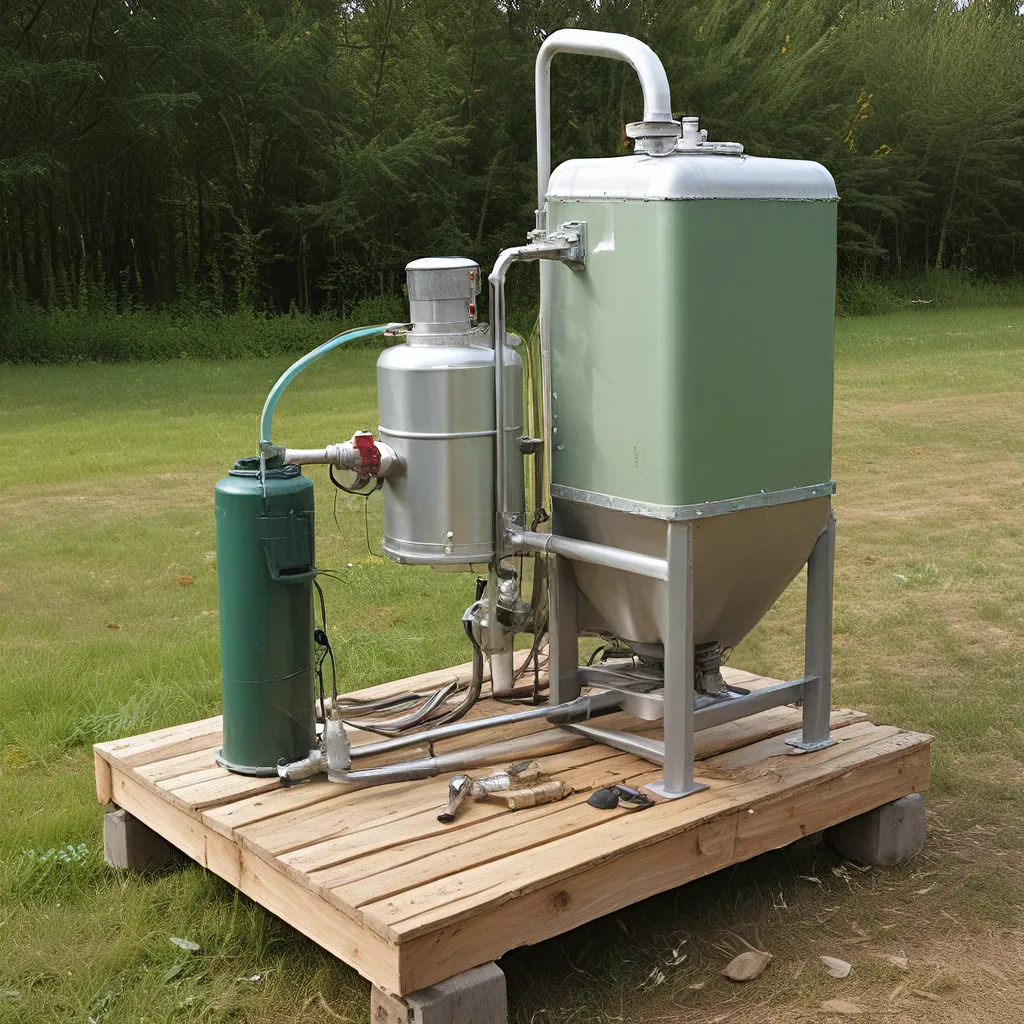
Taming the Flames of Self-Reliance
Picture this – you’re miles from the nearest gas station, deep in the heart of the wilderness, yet your vehicle’s fuel tank is bone dry. Yikes! No need to panic though, my friend. What if I told you that you have the power to brew your own homemade fuel right here in the great outdoors? That’s right, with a bit of know-how and a DIY biofuel processor, you can say goodbye to those pesky gas station trips and hello to the freedom of self-reliance.
Now, I know what you’re thinking – “Biofuel? Isn’t that just some hippy-dippy, eco-friendly fad?” Well, let me tell you, this is no passing trend. Biofuel production has been around for decades, and the technology has only gotten better. Plus, with the skyrocketing costs of traditional fossil fuels, making your own fuel can save you a pretty penny. We’re talking about $1 per gallon or less!
The Science Behind Homemade Fuel
So, how exactly does one brew their own biofuel, you ask? Well, it all comes down to a couple of simple chemical reactions. The first step is the methoxide reaction, where you mix methanol with a catalyst like potassium or sodium hydroxide. This exothermic (heat-releasing) process is the foundation for the rest of the magic.
Next up is the biodiesel reaction, where you combine the methoxide with oil – be it from used cooking oil, animal fats, or even crops like soybeans or canola. After a bit of agitation, you’ve got yourself a batch of biofuel, complete with a 20% cocktail of coproducts like glycerin and free fatty acids.
Now, I know what you’re thinking – “Chemicals? Catalysts? This sounds way too complicated!” But hear me out. With the right setup and a little practice, this process is actually quite straightforward. In fact, you can rig up a DIY biofuel processor for under $1,000 using an old electric water heater as the reactor tank. Or, if you’re feeling a bit fancier, you can invest in a pre-made automated system for around $10,000.
Gathering the Ingredients
The first step in your biofuel-making journey is to secure a reliable source of feedstock. Now, you could go the traditional route and grow your own crops like soybeans or canola, but let’s be real – who’s got the time or the green thumb for that? Nah, the easy way is to hit up your local restaurants, makeup manufacturers, or nutraceutical companies for their used cooking oil. That stuff is just going to waste anyway, so why not put it to good use?
Once you’ve got your hands on some used oil, it’s time to start purifying it. You see, that stuff is often filled with water and fried food bits, and water is not your friend when making biofuel. So, you’ll need to heat the oil and let the contaminants settle to the bottom before pouring off the good stuff.
Building Your Biofuel Processor
Now comes the fun part – assembling your DIY biofuel processor. As I mentioned, you can go the homemade route with an old water heater or opt for a pre-made kit. Either way, you’ll need to make sure you’ve got the essentials covered – a stainless steel reactor tank, a wash station to remove the coproducts, and some storage containers for your freshly brewed fuel.
And don’t forget, safety is key when dealing with flammable and caustic chemicals. Make sure you’ve got your local fire marshal and building inspector on speed dial to ensure you’re complying with all the necessary regulations and fire codes. The last thing you want is to end up with a pile of methanol-laced glycerin behind your barn.
The Benefits of Biofuel
Now, I know what you’re thinking – “Why go through all this trouble when I can just fill up at the gas station?” Well, my friend, the benefits of biofuel are simply too good to ignore. For starters, you’ll be saving a boatload of cash – we’re talking about a per-gallon cost that’s a fraction of what you’d pay at the pump. Plus, you’ll be doing your part to reduce your carbon footprint by using a renewable, eco-friendly fuel source.
But the real kicker? The freedom and self-reliance of driving down the road on fuel you made yourself. No more waiting in line at the gas station, no more worrying about supply shortages or price fluctuations. It’s just you, your vehicle, and the open road, powered by the fruits of your own labor.
The Road Ahead
Alright, so you’re sold on the idea of homemade biofuel – now what? Well, the first step is to start researching and planning. Check out the resources I’ve provided below, including books, websites, and suppliers of biofuel equipment. Familiarize yourself with the process, understand the risks, and start lining up your feedstock.
And once you’ve got the hang of it, why stop at just fueling your own vehicle? Consider joining forces with your neighbors to produce fuel for your collective households. Or, if you’re feeling really ambitious, look into setting up a community-scale biofuel plant. The possibilities are endless!
So, what are you waiting for? Embrace the power of clean energy craftsmanship and take control of your fuel destiny. With a little elbow grease and a whole lot of determination, you can be driving down the road on homemade biofuel in no time. Who knows, maybe you’ll even inspire the rest of the world to follow in your footsteps. The future is ours to brew, my friends. Let’s get to it!
Resources
- Backyard Biodiesel: How to Brew Your Own Fuel by Lyle Estill and Bob Armantrout
- PlugnSave Energy Products
- Utah Biodiesel Supply
- Springboard Biodiesel